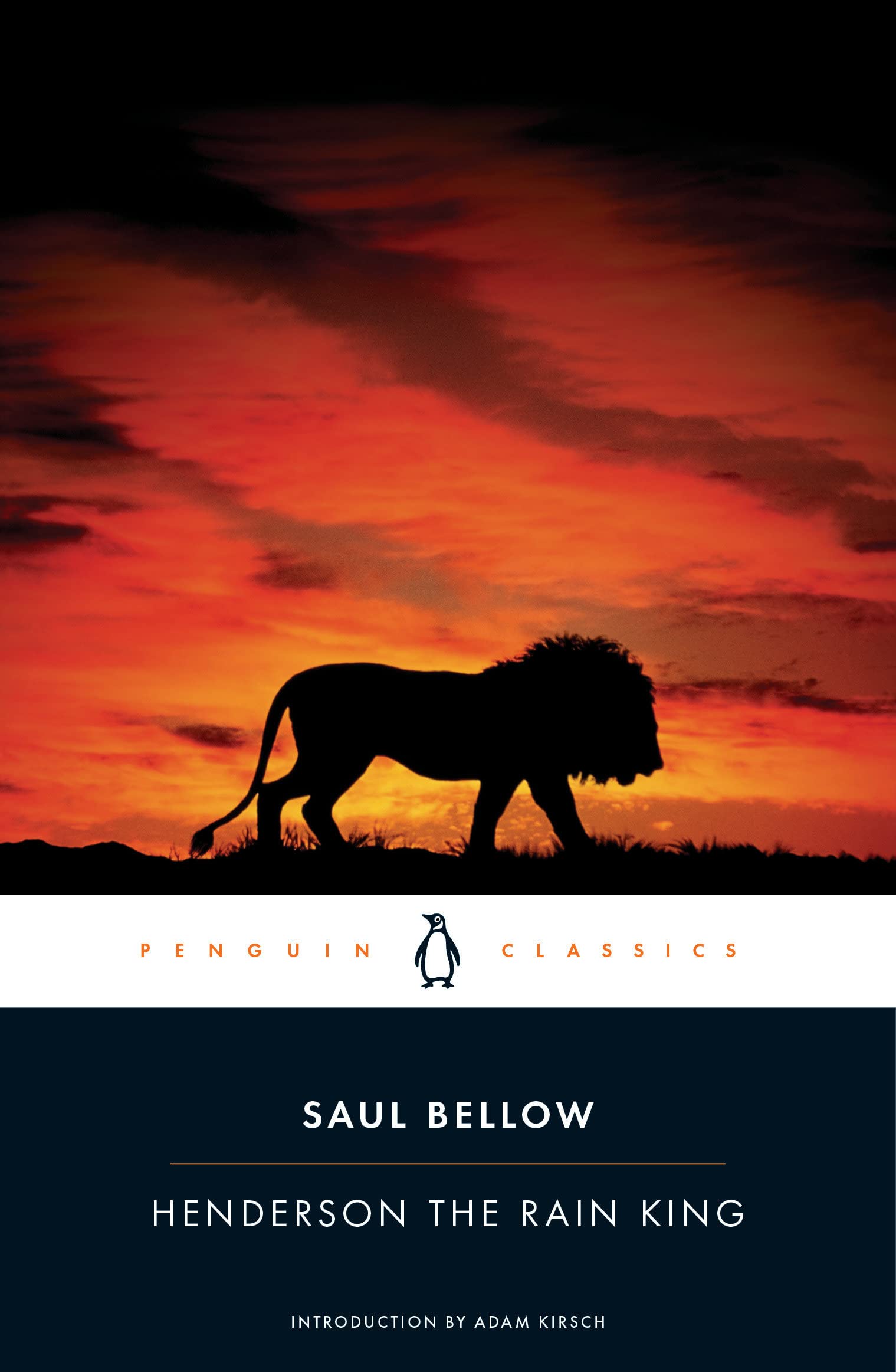By Saul Bellow
“Henderson the Rain King” is a novel by Saul Bellow that tells the story of Eugene Henderson, a wealthy and successful but dissatisfied businessman who embarks on a journey of self-discovery in Africa. Through vivid imagery, rich symbolism, and powerful characterizations, Bellow uses literary devices to explore themes of identity, spiritual fulfillment, and the search for meaning in a complex and changing world.
Themes 📚
- Identity and Self-Discovery: Eugene Henderson’s journey to Africa represents a quest for identity and a search for meaning in his life.
- Spiritual Fulfillment: Henderson’s search for fulfillment is tied to his spiritual journey, as he seeks to understand the nature of existence and the universe.
- The Individual and Society: Henderson’s struggle to reconcile his individual desires with his role in society reflects larger themes of individualism and community.
- Colonialism and Post-Colonialism: The novel explores the effects of colonialism and imperialism on Africa and its people, as well as the challenges faced by African nations in the post-colonial era.
- The Nature of Power: Henderson’s interactions with the African people and landscape reveal larger themes of power, both in terms of personal power and the power dynamics between different groups and cultures.
- The Complexity of Human Relationships: The novel explores the intricacies of human relationships, including love, friendship, and familial bonds, and how these relationships are impacted by personal and cultural differences.
Use of Literary Devices ✍🏽
- Symbolism: The novel is rich in symbolism, with the African landscape and culture serving as powerful symbols of Henderson’s journey of self-discovery.
- Imagery: Bellow uses vivid and descriptive imagery to create a vivid sense of place and to convey the emotions and experiences of his characters.
- Allusion: The novel contains numerous allusions to works of literature and mythology, including the story of King Solomon and the biblical Book of Ecclesiastes.
- Irony: Bellow employs irony throughout the novel to highlight the contrast between Henderson’s privileged life in America and his experiences in Africa.
- Satire: The novel contains elements of satire, particularly in its depiction of Henderson’s wealthy and entitled lifestyle and his eventual rejection of it.
- Foreshadowing: Bellow uses foreshadowing to hint at the events to come, particularly in the opening chapter where Henderson experiences a sense of unease and a foreshadowing of his eventual journey.
- Metaphor: The novel contains numerous metaphors, such as the rain king himself representing the power of nature and the spiritual realm.
- Personification: Bellow personifies nature throughout the novel, giving it a sense of agency and intentionality.
- Flashback: The novel contains numerous flashbacks to Henderson’s past experiences, which serve to illuminate his present motivations and struggles.
- Stream of Consciousness: At times, the novel employs a stream of consciousness narrative technique, allowing the reader to experience Henderson’s thoughts and emotions in a more direct and visceral way.
Examples of Literary Devices 📋
1. Symbolism
| Symbol | Description | Interpretation |
|---|---|---|
| The Rain | Precipitation that brings life to nature | Rebirth, transformation, and personal growth |
| Wariri’s Lion | A trapped lion who eventually dies | Henderson’s struggle with his inner demons and desire for freedom |
| The Drum | An instrument played by the Arnewi tribe | Connection to ancestral roots and the power of tradition |
2. Imagery
| Image | Description | Significance |
|---|---|---|
| African Landscape | Vast savannas, lush rainforests, and arid deserts | Sets the backdrop for Henderson’s journey of self-discovery |
| The Rain Ceremony | A ritual performed by the Wariri tribe to bring rain | Highlights the clash of cultures and Henderson’s search for meaning |
| The Pig Ritual | A ritual performed by the Arnewi tribe to ensure fertility | Illustrates the importance of tradition and cultural practices |
3. Allusion
| Allusion | Description | Significance |
|---|---|---|
| Biblical | Henderson’s search for meaning and redemption | Draws parallels to spiritual quests and the search for purpose |
| Literary | References to classic literature and myths | Adds depth to the novel’s themes and character development |
| Historical | Mentions of historical events and figures | Provides context for the novel’s setting and themes |
4. Irony
| Type of Irony | Example | Significance |
|---|---|---|
| Situational | Henderson’s quest for enlightenment leading him to a remote African tribe | Highlights the unexpected paths to self-discovery and personal growth |
| Verbal | Henderson’s self-deprecating humor and sarcasm | Serves to reveal his inner turmoil and dissatisfaction with his life |
| Event or Detail | Description | Outcome or Significance |
|---|---|---|
| Henderson’s Restlessness | Henderson’s dissatisfaction with his life and wealth | Foreshadows his journey to Africa and search for meaning |
| The Lion’s Suffering | The trapped lion in the Wariri tribe’s village | Reflects Henderson’s own struggle with his inner demons and desire for freedom |
FAQs 💭
What are some common literary devices found in “Henderson the Rain King”?
Symbolism, imagery, allusion, irony, and foreshadowing.
How does Saul Bellow use symbolism in the novel?
Bellow uses symbols like the rain, Wariri’s lion, and the drum to convey abstract ideas such as rebirth, transformation, personal growth, and the power of tradition.
How does the author employ imagery?
Bellow uses vivid descriptions of landscapes, rituals, and characters to create a rich atmosphere and evoke the setting of Africa during Henderson’s journey.
What role does allusion play in “Henderson the Rain King”?
Can you provide examples of irony in the novel?
Examples of irony include Henderson’s unexpected journey to Africa for enlightenment and his self-deprecating humor that reveals his inner turmoil and dissatisfaction.
How does Saul Bellow use foreshadowing in “Henderson the Rain King”?
Foreshadowing is used through Henderson’s restlessness and the suffering of the trapped lion, both of which hint at his upcoming journey and inner struggles.

